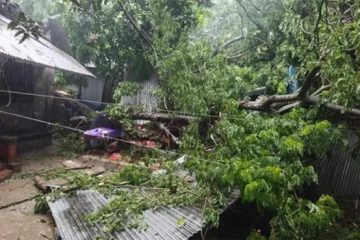From The News Today
 The Halda River in Chittagong, considered as the major source of Indian carps, is going to lose its fish resources over the next two decades due to intrusion of saline water apprehended to be caused by sea-level rise, reports UNB.
The Halda River in Chittagong, considered as the major source of Indian carps, is going to lose its fish resources over the next two decades due to intrusion of saline water apprehended to be caused by sea-level rise, reports UNB.
“The Halda River will lose its sweet water flow eventually damaging the breeding grounds of Indian carps, as the sea level is likely to rise by 2-3 mitres within 2050 bringing in saline water,” Prof Abdul Kader of the Institute of Marine Science and Fisheries at Chittagong University told UNB.
Prof Kader said the Halda is the richest spawning ground of Indian major carps, including Catla fish (Catla catla), Ruhi fish (Labeo Rohita), Mrigal fish (Cirrhinus Marigala) and Kalbaoush (Labeo Calbasu) in Bangladesh. “Besides, 60 percent of the country”s pond carps culture is dependent on the fish fry naturally produced in the river.”
He said it is not only the sea-level rise, but there are also other reasons like over-fishing, massive sand lifting, water contamination by industrial wastes, destruction of various species of fish, including fry and mother fishes, geographical change and unchecked riverbank erosion are taking their toll on bio-diversity of the important river.
Prof Noman Ahmed Siddiqiue, a marine scientist and researcher, said the river is the country”s major source of fish fry, as mother fishes of indigenous species like Ruhi, Catla, Mrigel and Kaliboush migrate to Halda from different rivers and lay eggs during March-June period every year.
“If salinity affects the river by 8 ppt (parts per thousand) in the future, it”ll lose its ideal atmosphere for the breeding of Indian carps apart from the biodiversity. The downstream of the river is already affected by salinity, particularly during winter season,” Prof Noman apprehends.
A recent study by the Institute of Water Modelling (IWM) shows the salinity level in the river rose to 8 ppt in dry session in 2005 and it may rise sharply in the future, as the sea level will rise by around 2-3 mitres by 2050, destroying its fresh water pockets.
Emaduddin Ahmed, Executive Director of the IWM and a climate expert, said the country”s most rivers are losing their breeding grounds of fish because of poor flow of water caused by climate change apart from water contamination.
He suggested taking effective measures for maintaining the fresh water flow in the Kaptai Lake during monsoon to release it to the Halda during winter and thus resist the intrusion of saline water.
The Halda flows through Raozan, Hathazari and Fatikchhari of north Chittagong while 10 km of it runs through Satterghat to Madunaghat, which is known as a fish sanctuary.
During the Bangla months of Baishakh and Jaishtha (April and May) every year, different species of mother fishes like Ruhi, Catla, Mrigel and Kaliboush start migrating to the spawning ground of the Halda River from rivers like Karnaphuli, Matamuhuri and Sangu.
At a suitable juncture of dark fortnight or full moon and in congenial weather, particularly at the first shower of the monsoon, they start releasing fertilized eggs (locally known as Swarna Renu – gold sperm) over the 10-km stretch from Satterghat to Madunaghat of Raozan upazila.




















